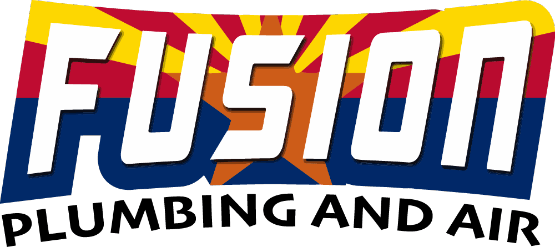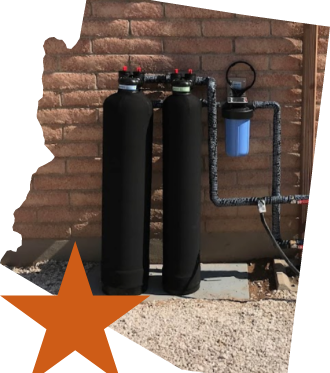People who live in desert climates face some unique challenges regarding plumbing. Dealing with plumbing problems in deserts can be challenging for many reasons, including the climate, sand infiltration, and a lack of deep water near the surface. Also, homes may not receive enough rainfall to offset water use. Therefore, it can be challenging to know how much water is coming into the house.
At Fusion Plumbing & Air, we believe that having a dependable water supply is essential to having a healthy and comfortable home. We advocate investing in some quality plumbing products for your desert home to minimize the plumbing challenges of extreme climatic conditions.
As long as you take proper precautions, you can make the most of your plumbing and prevent future problems. Our main aim for this article is to assist you, a desert homeowner, find out some of the best plumbing products currently available on the market to solve your plumbing challenges.
Best Plumbing Products for Desert Homes
Water Filters
If there’s one thing that you’re going to need in a desert region, it’s a quality water filter. Water filters keep harmful chemicals out of the water and can help keep your water clean. What makes them more effective in this climate is their ability to remove minerals, which can harm your home’s pipes and fixtures. Therefore, your water filter needs to be able to draw a wide range of minerals and has enough room to hold them in large quantities.
There are a variety of water filter types, but three of the most common ones you’ll see are carbon filters, reverse osmosis membranes, and sediment filters.
- Carbon filters: Carbon filters are one of the most popular choices for home water filtering. These systems use an activated carbon filter that pulls toxic compounds and dissolved minerals out of the water. This type of filter usually requires you to flush water through the system before use.
- Reverse osmosis membranes: Reverse osmosis uses a pressure differential between two chambers to push water through the membrane and out of the system. The membrane comprises semi-permeable polymers that allow only some molecules to pass through. Holes in the polymers are smaller than most of the ions that make up minerals and elements like chlorine, so it only lets them pass through very slowly. Almost all these contaminants are left behind as waste products in the tank.
- Sediment filters: Sediment filters remove contaminants like organic matter, oils, and any other debris floating around in the water. This kind of filter is usually made up of several layers of mesh. Water flows through the top layer of mesh, goes through a filter in the middle, and then through a bottom filter. Sediment filters are most effective when found in a sump pump, where the water flows through the tank on a steady basis. This kind of filtration doesn’t remove all contaminants, so you should still use carbon or reverse osmosis filters to supplement it.
Low-Flow Toilets
You may not have even noticed, but toilets differ in the water they use. Low-flow toilets, or reduced-flush toilets, use significantly less water than traditional toilets. Low-flow toilets work by storing water in a small storage tank on the back of the toilet. Only a tiny amount of water is released into the toilet to push everything down and out when you flush. This helps reduce the overall amount of water used per flush, and some models even include separate buttons for solid and liquid waste.
Faucet Aerators
When you turn on the water faucet and then let it run, it probably seems like the water goes down more quickly than it does. That is because of a plumbing device known as a faucet aerator. A faucet aerator is a small accessory that goes over the end of your faucet and reduces the amount of water pressure from your faucet, which helps reduce the strain on your pipes caused by sudden changes in water pressure. Additionally, it does an excellent job of minimizing water use and lowering utility bills.
There are also several convenient things about faucet aerators. They are easy to install, usually taking only a few minutes. Since they are so easy to install, they can be installed by the average individual.
Pumps
A pump is a key component of any plumbing system. When it’s working correctly, your drains will flow smoothly. There are pumps for different purposes, from water to air pumps, allowing you to choose the appropriate one for your needs. You can use them to pump water out or into your space. As a desert homeowner, you might opt for a pump to conserve water by being able to control the available water pressure better.
Hydronic Plumbing
Also referred to as “hot water heating systems,” hydronic systems are designed to transfer heat from your water into the room it flows through. They might sound unusual, but if you’ve encountered a home radiator, you’ve encountered one! The main goal in using them is to make sure that your home stays warm without wasting a lot of energy by heating an empty room.
A typical hydronic system consists of copper tubing that runs from the hot water tank through your walls and into a radiator. The radiator is usually above a door or near the wall to allow you to feel the heat if you’re sitting by it. When it’s cold and your radiator isn’t in use, turn down the temperature on your water heater to make sure that you don’t waste any energy.
Water Softener
The majority of desert homes are faced with the challenge of having hard water. It may not even occur to you, but it’s a common issue that can lead to severe problems if not taken into account. For instance, mineral buildup can decrease appliance efficiency and even corrode your pipes. If you’re looking for relief from this problem, it starts with a water softener.
Water softeners also ease the strain on other types of home water filters because they work to remove minerals from the water that enters your home. In concert with other types of filtration, water softeners can give you better quality drinking water and, in some cases, even have beneficial effects on your skin and hair.
High-Flow Showerheads and Faucets
Contrary to what their name may imply, high-flow fixtures don’t use more water than typical faucets or showerheads. Instead, they use technology that increases the pressure of the water coming out of your pipes. By increasing the pressure of the water that flows through them, these types of showerheads often actually use less water than conventional fixtures, and they can help reduce the likelihood your home’s pipes will burst.
Common Plumbing Hazards in Desert Environments
- Unprotected pipes
- Corrosive soil
- Hard water
- Salt
- Loss of water pressure
- Water heaters
- Growth of mold
Fusion Plumbing & Air is a contracting company specializing in heating, cooling, and plumbing services, available to residents of Tucson and Phoenix, Arizona. Our technicians undertake installations, repairs, and maintenance services to satisfy all your plumbing issues. Additionally, we have a 24/7 emergency response team to serve you in case you are faced with unexpected plumbing issues. Contact us today!




